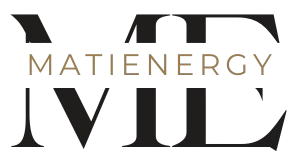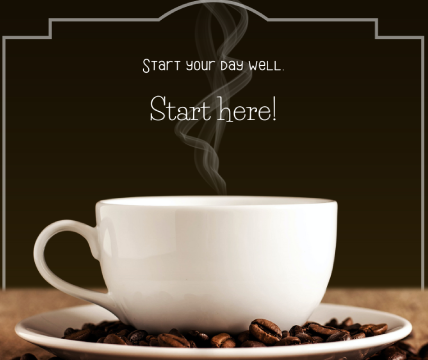Down Payment Strategies: Saving Faster Without Pain
For many first-time buyers, the biggest hurdle to homeownership isn’t monthly payments or credit scores, it’s the down payment. With housing prices climbing and interest rates in flux, saving enough cash upfront can feel like chasing a moving target. The good news: with a clear plan, it’s possible to accelerate your savings without sacrificing your daily comfort or sanity.
Here’s how to make that happen.
Set a Realistic Down Payment Goal
Before diving into strategies, it’s critical to define your target. A 20% down payment has long been the gold standard, helping borrowers avoid private mortgage insurance (PMI) and secure better rates. But that number isn’t mandatory. Many first-time homebuyers qualify for conventional loans with just 3% to 5% down. FHA loans allow as little as 3.5%.
In other words, if you’re buying a $350,000 home, your down payment could range from $10,500 to $70,000, depending on the loan program.
Set your goal based on:
-
Local home prices in your target area
-
Your loan eligibility
-
Whether avoiding PMI is worth the larger upfront cost
-
Your comfort level with monthly payments
Once you’ve identified your number, treat it like any other financial milestone, a defined goal with a timeline and structure.
Automate Your Savings
The easiest way to save painlessly is to remove decision-making from the process. Set up a dedicated down payment account and automate transfers from your checking account on payday. Even small amounts, such as $100 per week, add up quickly when they’re consistent.
A high-yield savings account or money market account can help your savings grow faster than a standard checking account. Keep this money separate from your daily spending to reduce the temptation to dip into it.
Funnel Windfalls Into the Fund
Your tax refund, bonus, freelance income, or stimulus payments shouldn’t go toward impulse buys or short-term splurges. Redirect these irregular but significant cash infusions into your down payment fund. It’s the fastest way to make big leaps in your goal without affecting your monthly budget
This includes:
-
Tax refunds
-
Performance bonuses
-
Gift money
-
Rebates and cash-back rewards
-
Credit card points redeemed for statement credits or gift cards
Cut Without Suffering
You don’t need to live on rice and beans to reach your goal. Focus on cuts that won’t affect your quality of life.
-
Pause subscriptions: Cancel services you barely use and resume them later if needed.
-
Review your insurance: Shop for better rates on car, renters, and health insurance. A few minutes of comparison shopping could save you hundreds annually.
-
Rethink transportation: If you own a vehicle you don’t need daily, consider selling it. If you’re in Nova Scotia or another Canadian province, platforms that specialize in used cars in Nova Scotia, Canada may offer competitive pricing for buyers and sellers alike.
-
Meal prep smarter: You don’t need to sacrifice good food, just cook in batches, avoid takeout, and plan meals ahead.
Saving painlessly is about trimming waste, not eliminating joy.
Leverage Employer Benefits
Some employers offer down payment assistance or homebuyer programs as part of their benefits package. These often go unused simply because employees aren’t aware they exist.
Ask your HR department if any of the following are available:
-
First-time buyer grants
-
Employer-sponsored savings match programs
-
Financial wellness courses with real estate guidance
-
Access to credit union rates or partner lenders
Even if there’s no direct cash assistance, you might find discounted services or homebuyer counseling that can save you thousands.
Explore Low-Down-Payment Loans and Assistance
Look into regional and national down payment assistance (DPA) programs. Many municipalities and states offer grants or forgivable loans to first-time homebuyers. These programs often have income limits and require completion of a homebuyer education course.
In Canada, the First-Time Home Buyer Incentive from the federal government can provide 5% or 10% of your home’s purchase price to put toward your down payment. Similarly, local programs, such as Carlantic’s regional initiatives in Atlantic Canada, can help ease the upfront burden for qualified buyers.
Monetize What You Already Own
Do you have unused gear, furniture, or electronics gathering dust? Consider turning them into cash. Marketplaces such as Facebook Marketplace, Kijiji, or local consignment stores offer quick sales channels.
If you’re willing to take it further, consider:
-
Renting out a room in your current home
-
Turning a hobby into side income (photography, tutoring, writing)
-
Hosting short-term guests if your lease or home allows
Extra income, even sporadic, can shorten your timeline significantly.
Final Thought: Discipline Over Sacrifice
The fastest way to save is not through suffering, but through discipline. Automate your habits, set firm boundaries, and resist lifestyle creep when income increases. You don’t need to give up your morning coffee forever, but you might wait six months to upgrade your phone.
It’s a short-term stretch for a long-term gain.
FAQs
What is Carlantic and how does it help first-time buyers?
Carlantic is a housing support and advocacy initiative in Atlantic Canada. While not a lender, it offers resources, data, and access to local programs that help residents understand home affordability and connect with provincial incentives.
Where can I find used cars in Nova Scotia, Canada?
You can browse used cars in Nova Scotia, Canada through platforms like AutoTrader.ca, Kijiji Autos, and local dealership websites. These tools allow you to filter by region, mileage, and price to find vehicles that fit your budget and needs.
How much should I save for a down payment?
It depends on the loan type and home price. Many loans require 3% to 5%, but putting 20% down helps avoid private mortgage insurance and lowers monthly payments.
Can I use gift money for a down payment?
Yes. Most lenders allow gift funds from family members, but documentation may be required to show the money isn’t a loan.
What’s the best account to store my down payment savings?
Use a high-yield savings or money market account. These accounts offer better interest than checking accounts while keeping your money accessible.







